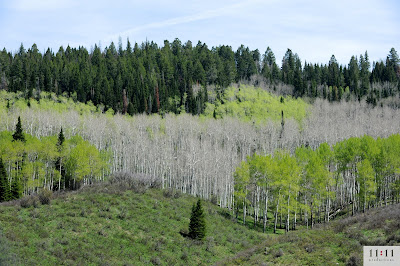Aspen Trees
One of the Largest Organisms on Earth
Aspen trees are the stems of one of the earth’s largest living organisms. Hundreds or even thousands of trees (which are clones, or identical genetically to one another) can be joined underground by a single root network and can live for thousands of years. The leaves of aspen trees sharing root systems (or clones) turn at the same time in autumn, often creating a brilliant singular display of color.
Kate said this is a great example of 2 different Aspen organisms so one is leafing out before the other.
All of the aspens (including the White Poplar) typically grow in large clonal colonies derived from a single seedling, and spreading by means of root suckers; new stems in the colony may appear at up to 30–40 metres from the parent tree. Each individual tree can live for 40–150 years above ground, but the root system of the colony is long-lived. In some cases, this is for thousands of years, sending up new trunks as the older trunks die off above ground. For this reason it is considered to be an indicator of ancient woodlands. One such colony in Utah, given the nickname of “Pando”, is claimed to be 80,000 years old, making it possibly the oldest living colony of aspens. Some aspen colonies become very large with time, spreading about a metre per year, eventually covering many hectares. They are able to survive forest fires, since the roots are below the heat of the fire, with new sprouts growing after the fire burns out.



